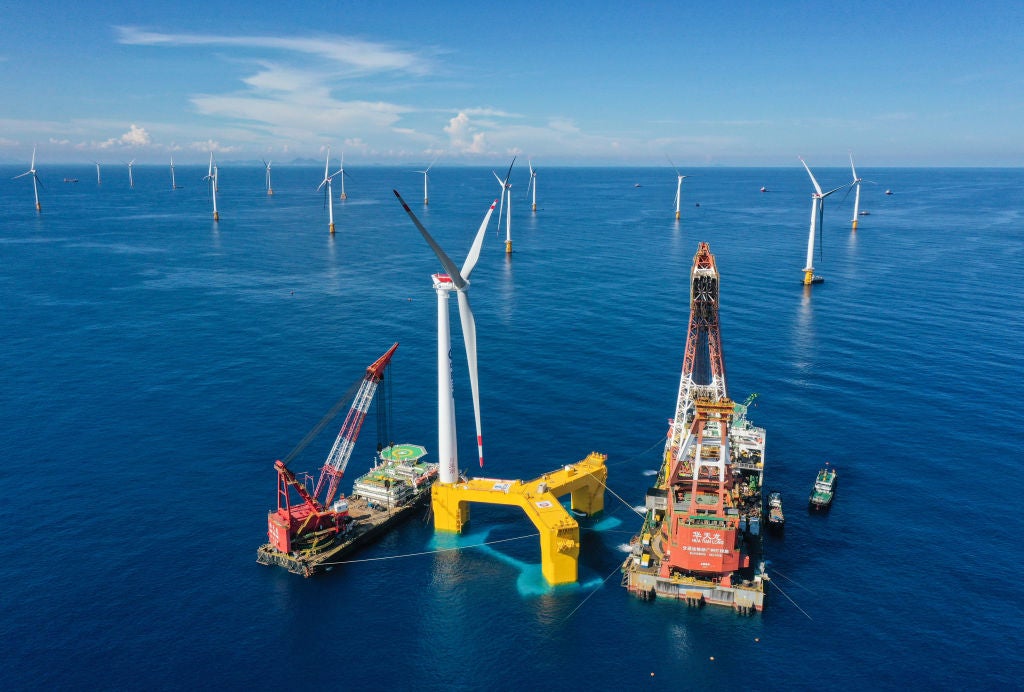Offshore wind holds some significant advantages over its onshore equivalent. Generally faster wind speeds means variability in output is less of a risk, and turbines at sea are less likely to run into the “not in my backyard” problem.
Historically, though, only a handful of markets – notably the UK, Germany and China – have built much offshore wind. The technology is more expensive than other renewable energies, and installation involves significant engineering expertise. In 2021, there was 54.7 gigawatts (GW) of offshore wind capacity installed globally, compared to 776.1GW of onshore wind, shows data from GlobalData, Energy Monitor’s parent company.

But the coming years are set to see offshore wind take off in a big way. The 18 countries that currently produce offshore wind power are set to be joined by another 17 by 2030, with countries including India, Italy, Poland, Australia and Saudi Arabia all building their first offshore wind farms.
The Philippines is one country on the brink of entering the offshore wind market, and is set to become a regional leader in Southeast Asia. The government will soon launch a new offshore wind strategy, which aims to take advantage of the country’s 178GW of potential capacity. The country’s Department of Energy recently listed 17 offshore wind projects, with a combined capacity of up to 11.6GW, that have been cleared for system impact studies with the Philippines’ National Grid Corporation.
Elsewhere, India is in the process of developing its first offshore wind project, a 1GW farm off the country’s West Coast in the Gulf of Khambhat, which GlobalData anticipates will come online by 2027. Saudi Arabia also has a project on the way, a 500MW initiative in the Persian Gulf due to come online in 2027.
Brazil is another new player. Its massive 72.2GW offshore wind pipeline is set to make it a global top five offshore wind power producer. The largest upcoming project listed in GlobalData’s database is the multi-stage Asa Branca project. When Asa Branca’s 36 720MW farms are completed by 2028, the project should supply 25.9GW of offshore wind capacity to Brazil’s grid. Other large projects include the 6.5GW Ventos do Sul project and the 5GW Ventos do Atlantico project.
Among those countries already operating offshore wind farms, 2021 saw China overtake the UK to become the country with the largest overall installed capacity. The 17GW of offshore capacity that the country built last year was more than the rest of the world combined had managed to build in the previous five years. However, China may not retain this position for long: a flurry of recent UK announcements, including the awarding of 25GW of new wind project sites off the Scottish coast, means the UK has the largest wind capacity pipeline, with 78.5GW on the way compared to 63.3GW in China.
In all, the data shows the global offshore wind pipeline is nine times larger than existing capacity. While this represents a massive scale-up, it nonetheless remains off track from what is required. The most recent Global Wind Report from the Global Wind Energy Council, published at the start of April, found the world is currently on track to have less than two-thirds of the wind energy capacity required to be on a pathway to net zero by mid-century.



